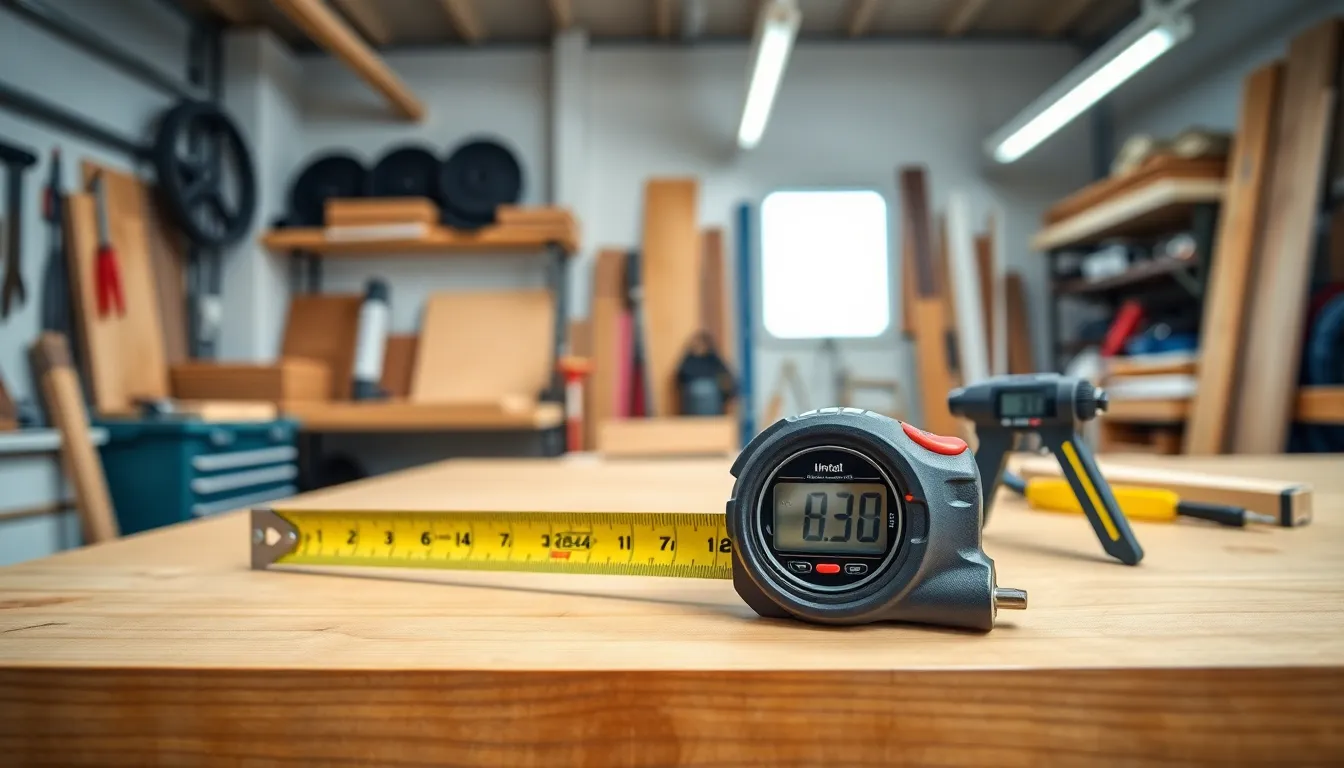In every workshop, whether it’s a sprawling garage or a compact home space, the right measuring tools can make or break the project. You can trust an expert when they say that accurate measurements are the secret sauce behind every successful build. Ever tried assembling IKEA furniture without measuring? It’s like trying to fit a square peg in a round hole, frustrating. In this text, we’ll investigate into the importance of these tools, types available, key features to think about, and some pro tips to make measuring a breeze. Get ready to elevate your workshop game.
Table of Contents
ToggleImportance of Accurate Measurements

Accurate measurements are the backbone of any project in a workshop. They ensure that components fit together perfectly and that the final product meets the required specifications. Even a minor error, like a 1/16th of an inch miscalculation, can lead to costly repairs or frustrating redo’s. This is especially true for projects involving wood or metal, where precision is crucial. Beyond aesthetics, accurate measurements significantly enhance safety. Poorly measured cuts on materials can lead to structural failures, which can be dangerous. Hence, investing time in learning about measuring tools is not just a good practice: it’s an absolute must.
Types of Measuring Tools Available
In a workshop, choosing the right measuring tool means understanding your options. Here’s a rundown of the common types:
1. Linear Measuring Tools
These are the workhorses of any workshop. Rulers, tape measures, and calipers fall under this category. Tape measures, in particular, are versatile for measuring lengths and can handle curves or irregular shapes. Standard rulers provide quick measurements for smaller items, while calipers offer precision, measuring internal and external dimensions with ease.
2. Angular Measuring Tools
For those intricate cuts and joints, angular measuring tools are essential. Protractors, angle finders, and digital angle gauges ensure that angles are accurate. Angles can often make or break a joint, especially in woodworking. When assembling furniture or cabinets, having the right angle tools guarantees that everything fits as it should, saving time and reducing frustration.
3. Depth and Height Measuring Tools
Depth gauges and height gauges, often overlooked, play a critical role in workshops. Depth gauges help in measuring how deep a hole is, which is crucial for tasks like drilling or mortising. Height gauges, often attached to a caliper or a larger measuring device, assist in leveling and marking accurate heights, ensuring that everything remains consistent.
Having the right tool for the job not only enhances the quality of work but also boosts efficiency.
Features to Consider When Choosing Measuring Tools
Selecting the best measuring tools requires careful thought. Here are key features to keep in mind:
- Precision: Look for tools that offer high accuracy levels. Decimal measurements are often preferable in fine woodworking.
- Material: Metal tools tend to last longer and provide better precision compared to plastic, especially for linear measurements. Consider rust-resistance if using in varying environments.
- Ease of Use: Tools that offer intuitive functionality save time and effort. Consider features like locking mechanisms in tape measures that hold measurements in place for increased accuracy.
- Visibility: Graduations should be easy to read. High contrast against the measuring tool helps avoid errors.
- Portability: For those who move between different workspaces, lightweight tools that are easy to carry become invaluable.
These considerations will ensure that the tools can stand the test of time while delivering the precision needed.
Calibration and Maintenance of Measuring Tools
Calibration is the verification process to ensure that measuring tools operate accurately. It’s advisable to calibrate tools regularly, especially if they’ve experienced rough treatment or if precision is paramount in projects.
- Frequency of Calibration: High-frequency users should calibrate their tools at least once a month, while hobbyists may only need to check before major projects.
- Maintenance: Clean measuring tools after each use. Dust or debris can throw off readings. Store them in protective cases to avoid damage.
- Checking Accuracy: Use known measurements to check tools regularly. For instance, compare your tape measure against a precision ruler to ensure it hasn’t stretched or warped.
Proper calibration and maintenance extend the lifespan of tools and enhance their effectiveness.
Tips for Using Measuring Tools Effectively
Being savvy with measuring tools can improve overall project efficiency. Here are some practical tips:
- Double-Check Measurements: Always measure twice before making cuts. This reduces mistakes and saves materials.
- Use the Right Tool for the Task: Don’t force a tool beyond its intended purpose. For instance, avoid using a tape measure for precise woodworking cuts when a caliper is available.
- Mark Clearly: Use a sharp pencil or a fine pen to mark measurements, ensuring visibility for cuts or drills.
- Hold Steady: Ensure that measuring tools are held straight and not bent, as this can lead to inaccurate readings.
- Practice: With experience comes expertise. The more one uses these tools, the more proficient they become.




